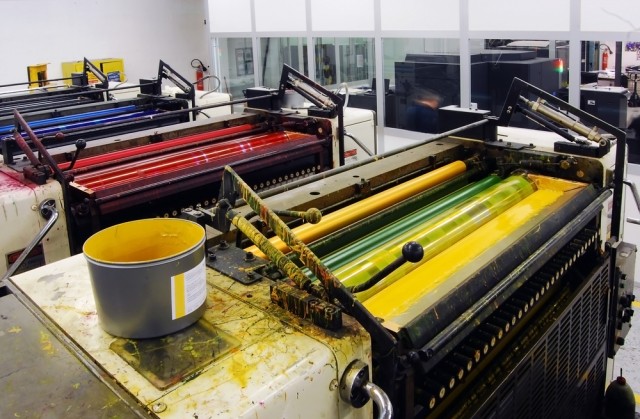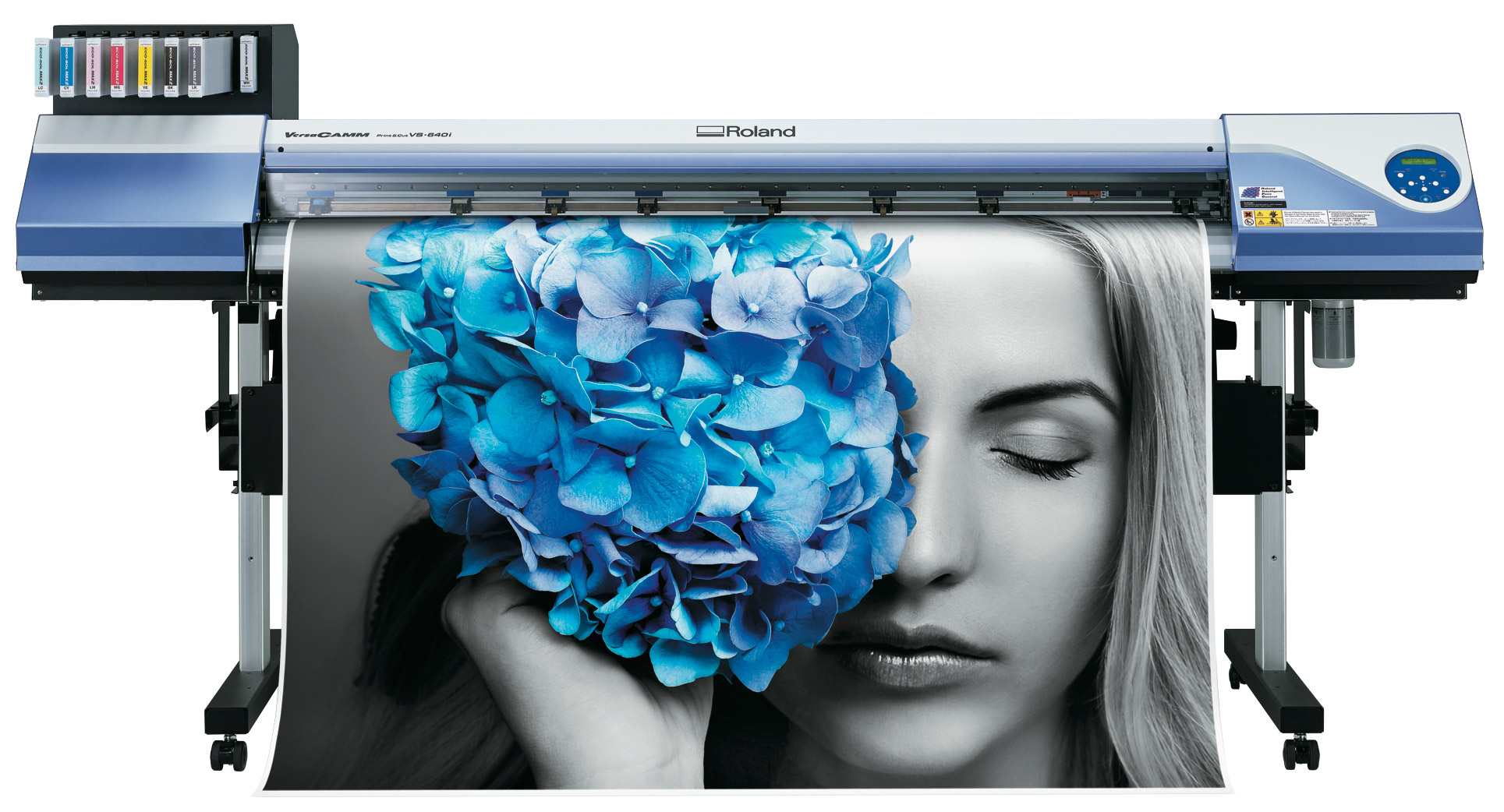What are the main differences between offset and digital printing?
Offset printing traditionally is done by a printing press, using the printing plate and ink that is wet. This kind of printing takes some time to execute because it requires more set-up time, and the finished product needs to dry before the final can be completed. However, offset printing typically produces the best quality on the largest variety of paper and supplies the greatest control over the colour. Additionally, offset printing will be your most cost-effective option when it comes to producing large quantities of prints made from a handful of originals.

The process of digital printing was previously known as “copying,” but the word is no longer used. Nowadays, most digital printing is created directly from digital files instead of making copies of an original hard copy. The digital printing process is the most efficient method to print small runs, particularly when there are many originals. The quality of digital printing is quite similar to that of offset printing. There are also certain jobs where digital printing can perform just as well or better than offset printing.

Suppose you’re looking for business cards, brochures, posters, or any other marketing tools. In that case, you realize that you’ll have to think of the ideal design and colour scheme, copy, and layout. But, after you’ve checked the boxes on your list, there’s an additional crucial choice to make: deciding between offset vs. digital Offset printing.
In this article, we’ll go over the main distinctions between the two printing methods and explain the advantages and disadvantages they appear to be. We’ll also discuss the various factors to consider when making your choice when deciding the most suitable method for your specific project. We’ll also review several examples to help you gain the most understanding of offset and digital printing in action.
Offset printing

Offset printing, also known as Lithography, is the most commonly used type of printing used for large volume commercial projects. Have you ever seen footage of newspapers squeezing through large rolls? This is offset printing.
This is how it works. The printer prints the design on metal plates, one per colour. The four colours used are (cyan, magenta, yellow, and black (key), abbreviated CMYK). However, offset printing can also allow customized ink colours (especially Pantone shades) to be utilized instead.
The design is then transferred from plates to the rubber rolls. The various colours of ink are sprayed on the rubber, and the paper is rolled between them. The paper is then run through the various roles and layered with the colour to produce the image.
The advantages of offset printing
- Excellent and stable image quality. You can count on offset printing to produce clear, precise text and images that do not have streaks or spots
- More accurate colour is a term used to describe the accuracy of colours and their harmony in the design. Because offset printing mixes customized colour inks for every job, it’s bound to ensure that the colours are accurate.
- It can be used on nearly every kind of substance.
- For jobs with a large volume, you get more value for your money. It’s expensive to begin an offset project. It will help if you put cash to make the plates, which requires time. But once you’ve put your money into it, all the components are in place. You’ll pay less for large offset jobs than digital printing, which will cost about equal per print, no matter how large the project gets.
The disadvantage is offset printing.
- The high cost of low volume jobs
- A longer timetable as plates have to be designed
- The worst consequences are when there’s an error. If you don’t spot the error on the plate and then ruin the batch, it’s more difficult to correct, and the process begins new.
Digital printing

Digital printing was introduced to its scene, noticed the amount of work offset printing did, and the steps required for it and then said, “nah.” This technique eliminates plates, proofs and the rubber bed and instead directs a design to the printing surface, either using liquid ink or powdered.
The laserjet or inkjet connected to your home computer? This is the digital printer. The largest printing companies have printers that are larger, more efficient as well as more accurate. However, it’s the same idea.
The advantages of digital printing:
- Speedier processing time
- Every image in each print is the same. There are fewer chances of irregular variations due to imbalances in ink and water.
- It is cheaper to use for smaller-scale jobs. Prices per unit drop when offset printing is used, and at some point, they cross.
- Changes information in one print job. For instance, suppose you were printing postcards to promote an event. You could alter the dates and places for one batch of cards to make two sets of cards to promote two different shows.
The disadvantages of digital printing:
- A smaller number of alternatives in the types of materials that you can print on
- Lower colour accuracy can be achieved using digital printing as digital jobs employ regular inks that cannot match all colours. Offset jobs employ specially mixed inks that are always a better match. Digital technology is getting better and closer to blended inks; however, the inks may not always match an individual mix.
- Costs are higher cost for high-volume jobs
- Very less expensive sharpness, crispness and clarity
What is the best way to choose between digital printing vs. offset printing
Suppose you’re not sure whether you should go with digital or. Offset printing on your next venture through this checklist to zero on the best option:
Volume: How large will the undertaking be?
If your undertaking is large enough to offset the initial cost–and we’re usually talking about over 500 pieces, offset printing can give the user an edge. You’ll receive a stunning print that is likely to cost less when you have enough quantity.
Time: Are you in a rush?
Digital takes home the cash prize. Offset printing can’t be done in the last second.
A chic vertical business card designed in your colours on transparent plastic? It’s a great job to offset print.
What material is the material you are printing on?
Are you searching for unusual business cards printed on plastic or metal? Perhaps a unique marketing tool on a different surface? Digital printing options are more flexible than they ever were, and offset printing offers a distinct advantage.
Colour How much is it, what type and in what way?
Do you think this job requires colours? If it’s black and white, or only one or two colours (and the quantity is high enough), offset printing could be the best option. If you require simple four-colour printing, digital is the best choice, as it is the most affordable.
However, if an absolute colour match is required (for instance, when you have to utilize the Pantone(r) matching system), you should consider offsetting printing. The offset process utilizes actual Pantone(r) ink to guarantee the perfect match. At the same time, digital printing only gives you the closest representation of the colour.
Custom work: Do you require something unique?
What’s unique this time?
It’s the simplest and most affordable method of customizing your designs and even with one printing.
Do you require proof? To look at a sample before you can make a decision?
If you’re looking to view an actual print before taking it to the next step, then going digital offers the advantages. To get a colour-proof for an offset design, you’ll have to finish the most difficult components of the process (plates and the ink), and it can be costly.
Type: What do you print?
Thank you cards or notes?
White and black or two or three colours? If you’re sure and need more than 500 people, you should consider offsetting.
If you do but only need a couple of them, then go with digital. This is the same for full-colour. Digital is the best option…
Book jackets or posters?
If yes, you’ll require superior quality printing to make the images appear perfect. Consider using offset printing if you can.
Newsletters or newspapers with high volumes?
Printing offset is the best way to take.
High volume work that requires precision, such as newspaper or many newsletters, are ideal in offset printing.
Conclusion:
Although personal preferences certainly play an important role, the distinctions between offset and digital. Offset printing can help you make intelligent choices when choosing which option is best suited to your particular project. Much like any other task working with a designer can provide you with an amount of additional information and knowledge, so if you’re confused about which method is right for your particular project, Don’t be afraid to seek assistance from an expert!
